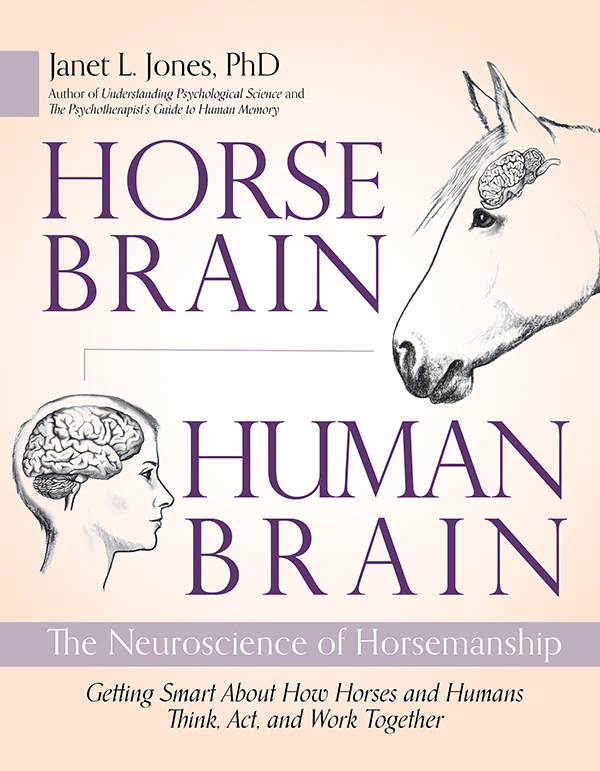TRUE TRAINING 104 - Adding to Simple Gymnastics
Dec 15, 2024 by Janet Jones
True has been continuing with jumping gymnastics of the kind I described a few weeks ago, in Post 96. They're best explained in Jimmy Wofford’s classic book, Gymnastics: Systematic Training for Jumping Horses. In my last article on the topic, True was working one of the simplest gymnastics. He trots in over four trot poles, then hops a crosspole which is about 18” high at the center, takes one canter stride across a distance of 18’, and hops out over a 2’ horizontal pole, and canters away.
He's calm, centered, and experienced with that, so I add a third element 19’ away. I like to introduce oxers this way, but you don’t have to. Most young horses find small oxers easy to jump; it’s just the look of them that can be a little confusing. For True, I make the third element an oxer about 2’ high and 2’ wide. When he’s comfy with that, I raise the height, add width, and increase the distance to 20’—all very gradually, of course.
One of the many advantages of this gymnastic is that you can introduce just about anything as the third element. If a horse has trouble with yellow flower boxes, for example, that third element is a good spot to add one. The horse is already comfortable with the gymnastic itself and knows exactly what is expected of her. She knows how to jump straight and true over that third fence, so the yellow flowers become less of a distraction.
Sometimes I use low solids here, also, though Wofford does not recommend that. But I’ve found it a good way to introduce a young horse to low solids like a 2’ brick wall or half round. If you try it, be sure to use a solid only as the last element in the gymnastic, not somewhere in the middle. (For those of you new to jumping, a "solid" is usually made of lightweight plastic that will fall over. The brick wall is not made of brick! But, if you're that new to the sport, please learn to jump on a schoolmaster with a good riding instructor and save jump training for much later.)
Over many training sessions, I like to use that third element to teach distances, too. I alter the distance between the second and third elements gradually so that sometimes (e.g. 20’) the young horse has to lengthen his stride and other times (e.g., 20’) he has to shorten it. Changing to two or three strides is easy to do in this gymnastic, too. Wofford offers lots of others; I highly recommend his book in the old classic edition cited above or the newer contemporary one.
He's calm, centered, and experienced with that, so I add a third element 19’ away. I like to introduce oxers this way, but you don’t have to. Most young horses find small oxers easy to jump; it’s just the look of them that can be a little confusing. For True, I make the third element an oxer about 2’ high and 2’ wide. When he’s comfy with that, I raise the height, add width, and increase the distance to 20’—all very gradually, of course.
One of the many advantages of this gymnastic is that you can introduce just about anything as the third element. If a horse has trouble with yellow flower boxes, for example, that third element is a good spot to add one. The horse is already comfortable with the gymnastic itself and knows exactly what is expected of her. She knows how to jump straight and true over that third fence, so the yellow flowers become less of a distraction.
Sometimes I use low solids here, also, though Wofford does not recommend that. But I’ve found it a good way to introduce a young horse to low solids like a 2’ brick wall or half round. If you try it, be sure to use a solid only as the last element in the gymnastic, not somewhere in the middle. (For those of you new to jumping, a "solid" is usually made of lightweight plastic that will fall over. The brick wall is not made of brick! But, if you're that new to the sport, please learn to jump on a schoolmaster with a good riding instructor and save jump training for much later.)
Over many training sessions, I like to use that third element to teach distances, too. I alter the distance between the second and third elements gradually so that sometimes (e.g. 20’) the young horse has to lengthen his stride and other times (e.g., 20’) he has to shorten it. Changing to two or three strides is easy to do in this gymnastic, too. Wofford offers lots of others; I highly recommend his book in the old classic edition cited above or the newer contemporary one.

